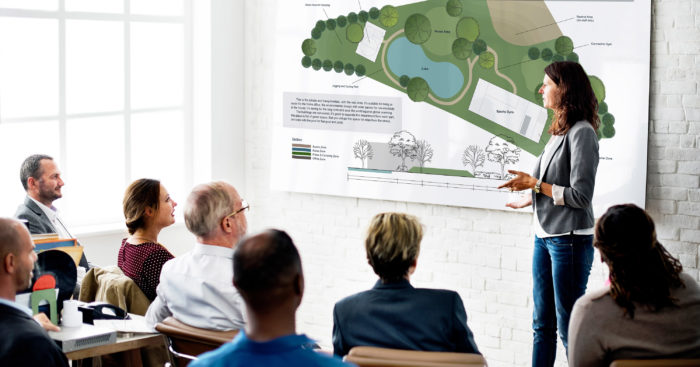On Common Ground: In-Person Public Involvement Can Contribute to Project Success

A public works project can drive many sentiments: some people may welcome the improvement. Others may be irked by the property impacts or irritated by the inconvenience. Whatever opinions they have about the project, residents likely want to be engaged in the process and receive clear responses to their concerns. Typical questions may include:
- Is it legal for trucks to block the road and limit my driveway access?
- What do you mean I have to park somewhere else?
- Will you be compensating me for the necessary removal of a fence or mature landscaping?
- Careless driving from a construction truck damaged my lawn: what are you going to do about it?
- How long will I be inconvenienced?
These concerns can be addressed by a Public Involvement (PI) Coordinator who adds value to the project by helping avoid unnecessary delays due to misunderstandings and controversy. While a fact-based written response will answer these questions, face-to-face meetings go beyond just words on a page for a more rewarding result.
Even with digital outreach as part of the information campaign, boots-on-the-ground communication efforts provided by the PI Coordinator are needed to build critical relationships. Conversations develop close ties with residents and provide helpful feedback. Look to the project’s PI Coordinator to liaison with the stakeholders and the clients, design team, construction crews, residents, and local businesses. The PI Coordinator is valuable in establishing a strategic relationship with each party, adding valuable insight and enhanced collaboration to the project.
A face-to-face conversation builds rapport. It makes it easier to assure residents, creates an informal exchange by keeping a person comfortable in their environment, allows for reading non-verbal cues and body language, and provides a quicker way to hash out minor details or solve problems. When an impacted resident just wants to be heard by someone in authority, a structured PI program can make that conversation happen and provide a better channel for resolving issues.
See how CRS worked with property owners on a recent levee project
Some ways a PI Coordinator can implement better project dialogue include:
Site visits: A project changes daily, and keeping stakeholders informed on changes may require frequent site visits to see project developments for yourself. The site visits also allow direct interaction with people at the site and a better understanding of their issues. Some of these concerns may be on the resident level, while some may be at the project level. Timely feedback to the correct area is critical. Interactions with stakeholders at the site require immediate follow-up.
Regular Weekly Updates: Weekly updates reduce the kind of surprises that can lead to stakeholder frustration. A good PI coordinator people’s contact information and communication preferences at the project launch to keep them informed and up to date. People appreciate knowing what is going on with a project in the neighborhood and understanding why they are being inconvenienced (i.e., a new sidewalk through their property that makes a walk to school safer for area children or a safer road for drivers).
Always allow your stakeholders an opportunity to bring you questions or concerns. As important as it is for a PI Coordinator to push out information, it is also essential to receive communication from stakeholders who want to discuss problems and hear details about a project.
Delivered Flyers: Project details can be printed and handed to affected stakeholders for a more impactful exchange. Never underestimate the power of a conversation, a handshake, or a thank you in person.
Cheerful Approach: “I want to leave our contacts with a smile and a positive experience,” said Carrie Rasmussen, PI Coordinator at CRS Engineers. “I keep a supply of smiley face pins, magnets, and stickers. I always leave a magnet when I deliver an information flyer to a homeowner. And plenty of stickers for the kids”. Even small efforts to reach out to those affected are a welcomed opportunity and do not go unnoticed—and talked about—by critical stakeholders.
It takes some extra effort, but personal communication makes the PI Coordinator more approachable, shows the builder in the best light, and improves the likelihood of stakeholder buy-in for sticky public works projects. The involvement of a PI coordinator will ensure that communication is clear and avoid the potential for costly delays, especially when the project is problematic.
For more information on public information contact Carrie Rasmussen at carrie.rasmussen@crsengineers.com.

